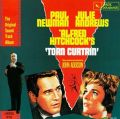
AllMusic Rating
User Rating (0)
Your Rating
Discography Timeline
See Full Discography
Torn Curtain (1978)
![A Bridge Too Far [Original Motion Picture Score]](https://fastly-s3.allmusic.com/release/mr0000106413/front/120/p9B-I83JyTmAkTX1LarxFZhUoDg0hsvx4F4sL4oO-nA=.jpg)

